
With less than a month left before Election Day the possibility that Democrats win control of the House looks very good. If and when Democrats win control their first priority should not be impeachment, it should be repairment. Repairing the main pillar of American democracy has to be job 1 if Democrats win control of the House, the Senate or both.
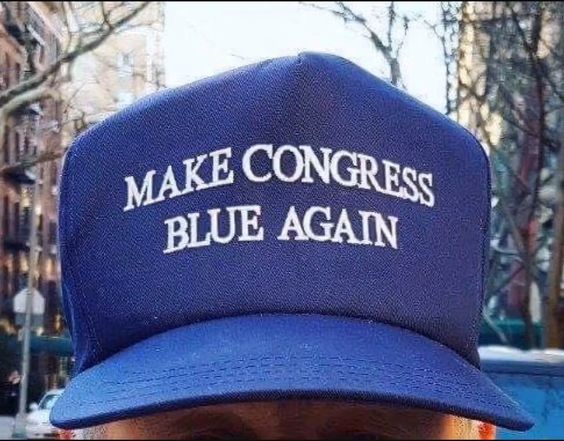
In 2013 the main pillar of American democracy, an American citizens’ unfettered right to vote, suffered a severe setback. A setback that caused the practice of one person one vote to fall into disrepair. In June of that year, the United States Supreme Court struck down section 4 of the 1965 Voting Rights Act. Section 4 had applied to nine states: Alabama, Alaska, Arizona, Georgia, Louisiana, Mississippi, South Carolina, Texas, and Virginia. It also applied to scores of counties and municipalities in other states like New York.
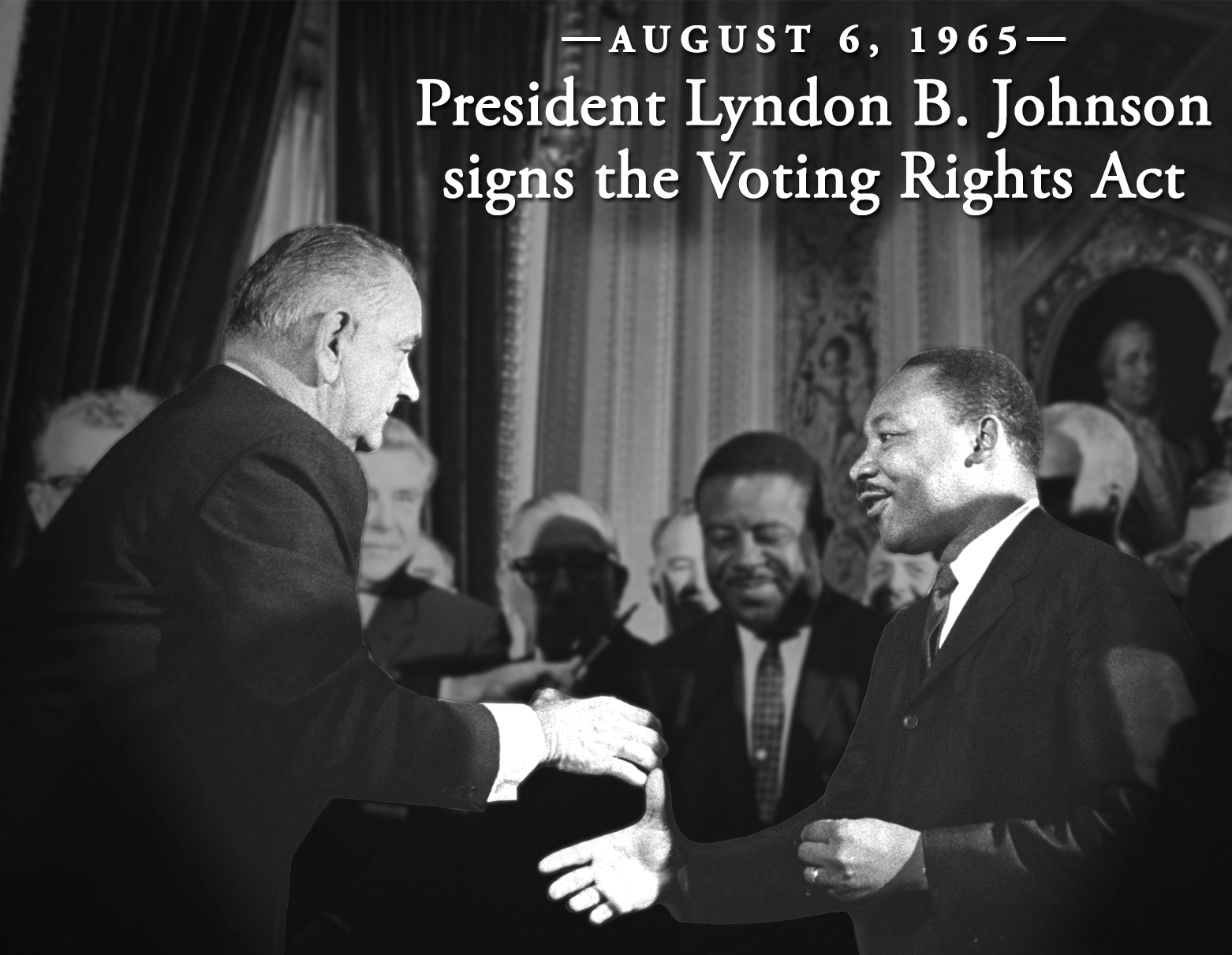
Section 4 determined which jurisdictions had to seek federal clearance before changing their election laws. The Supreme Court striking down section 4 means changes in voting procedures in those places that had been covered by the law, including changes that place restrictions on early voting, is now subject only to after-the-fact litigation. The decision had immediate practical consequences, consequences that need to be addressed if Democrats win control of the House or Senate. Texas announced shortly after the decision that a controversial voter identification law that had been blocked by the lower courts would go into effect immediately.
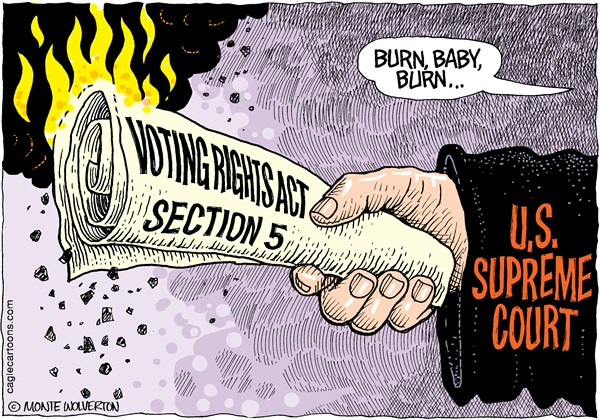
Striking down the section 4 formula rendered the section 5 pre-clearance requirement dead
There was great disappointment among many when the Supreme Court struck down section 4 because it rendered the Voting Rights Act powerless to prevent voter discrimination. Section 4 was the formula that determined which jurisdictions needed to have any changes to their election practices or election laws pre-cleared by the United States Department of Justice. As one of those who was personally disappointed with the Supreme Court for striking down section 4, I must admit part of the 5 Justices reasoning for doing so was logically sound and turned out to reflect a degree of truth about America’s current circumstances.

Chief Justice John G. Roberts, Jr. wrote the majority ruling opinion. In it, he stated, “Our country has changed, while any racial discrimination in voting is too much, Congress must ensure that the legislation it passes to remedy that problem speaks to current conditions.” Chief Justice Roberts wrote the current formula in section 4 is “based on 40-year-old facts having no logical relationship to the present day.” He made the point that if Congress was going to single out states that had to have pre-clearance before making any election changes, “ it must identify those jurisdictions to be singled out on a basis that makes sense in light of current conditions, it cannot simply rely on the past.”
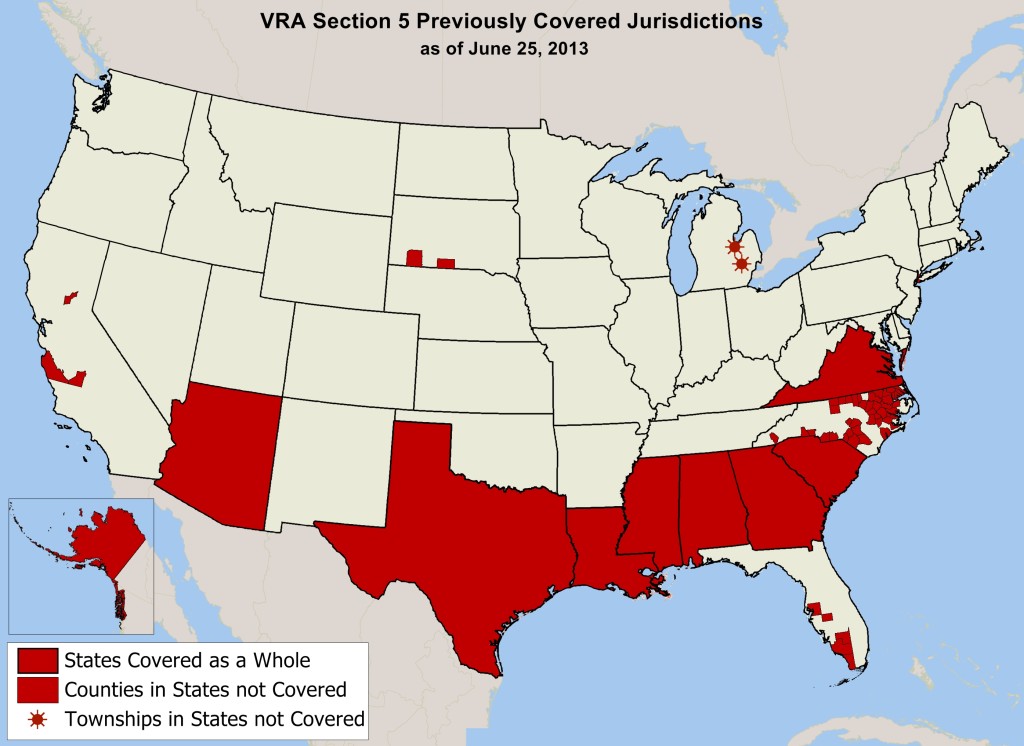
Areas covered by Section 5 of the Voting Rights Act at the time of the U.S. Supreme Court decision striking down section 4
In other words, the facts and data used to determine which places must get pre-clearance must be current. Congress voted in 2006 to reauthorize the Voting Rights Act for another 25 years, but unfortunately as the Supreme Court correctly pointed out in their decision the data Congress used in the law to determine which places would be singled out for pre-clearance was based on 1975 data. The ruling stated that Congress needed to amend the law with current data. Chief Justice Roberts went on to make the point that things have changed and the data should reflect that.
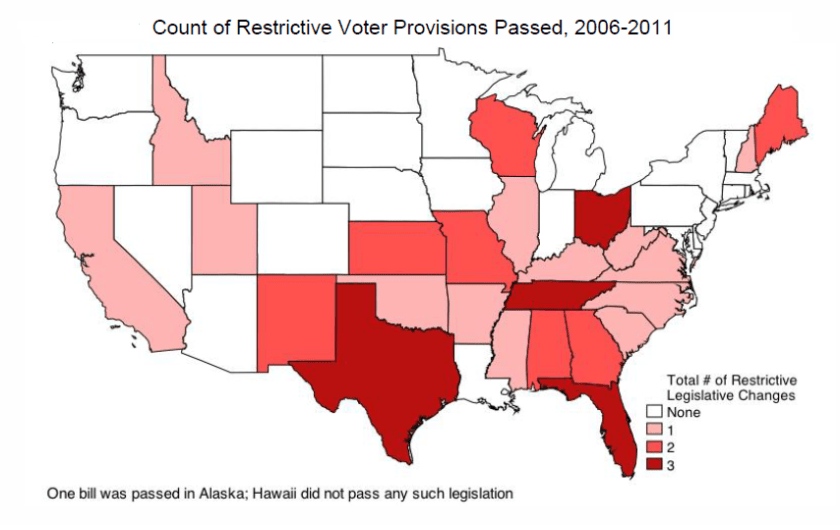
On this, the Chief Justice is 100% correct. Things have changed, the discriminatory practices are not just limited to those 9 mostly southern states anymore!!! Since 2010 many more states than those original 9 covered by the Voting Rights Act have introduced harsh measures making it harder to vote. 13 states have put more restrictive voter ID laws in place, 11 have laws making it harder for citizens to register, six cut back on early voting days and hours, and three made it harder to restore voting rights for people with past criminal convictions.
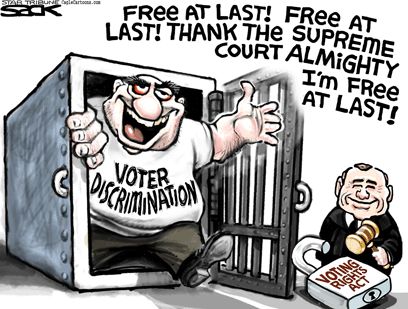
In 2016, 14 states had new voting restrictions in place for the first time in a presidential election. Those 14 states were: Alabama, Arizona, Indiana, Kansas, Mississippi, Nebraska, New Hampshire, Ohio, Rhode Island, South Carolina, Tennessee, Texas, Virginia, and Wisconsin. Of these 14 less than half (6) were covered by the Voting Rights Act, so even before section 4 was struck down 8 of these states could have made these restrictive changes without pre-clearance. North Dakota and Georgia are just 2 examples of the voter suppression efforts by many states taking place across the country.
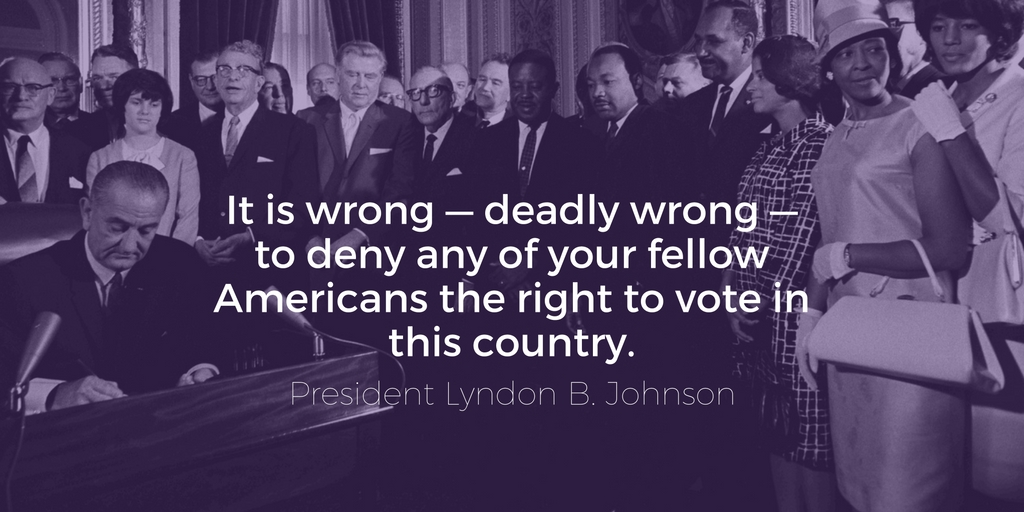
In North Dakota, the state legislature has passed a strict voter ID law that clearly suppresses the Native American vote. The voter ID law requires qualified voters to submit one of four forms of ID, which must contain the name, residential address, and date of birth. A P.O. box does not qualify as a residential address according to the law. Most Native American IDs do not have a residential address printed on them. This is due, in part, to the fact that the U.S. postal service does not provide residential delivery service onto rural Indian reservations so most Native Americans have to use P.O. Boxes. Tens of thousands of North Dakotans, including Native and non-Native residents, do not have residential addresses on their IDs and will now find it harder if not impossible to vote.
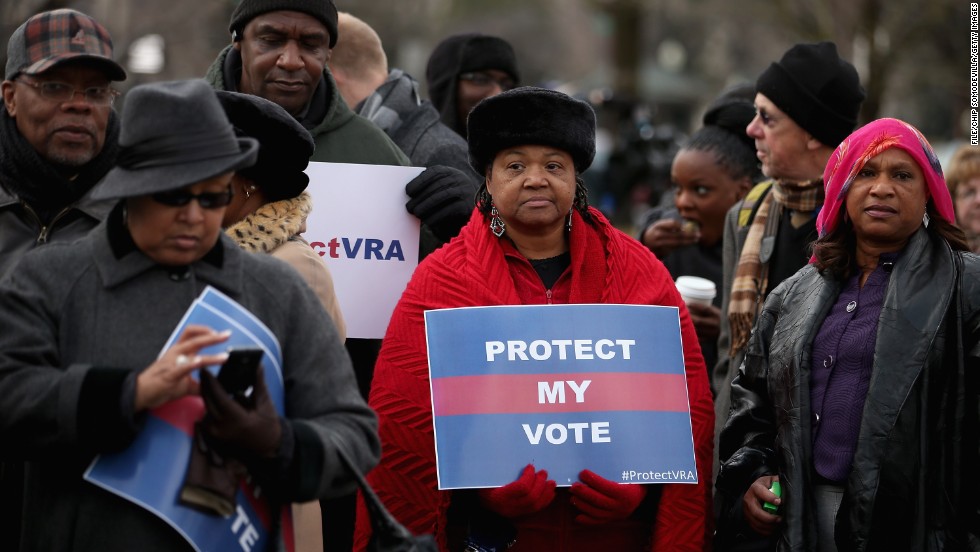
In 2017, Georgia passed legislation requiring that information on voter registration forms match exactly with existing state records, the “Exact Match” law. Even a single digit or a misplaced hyphen could be enough to prevent registration and instead put the application on “pending” status. Pending status means the voter is not registered to vote, and if they don’t provide the additional information needed to resolve the discrepancies within 26 months, their pending registrations will be canceled. Now reports indicate that approximately 53,000 people are now on pending status with a vastly disproportionate number of them being American Blacks, who are 32% of Georgia’s population but make up 70% of the pending status list.
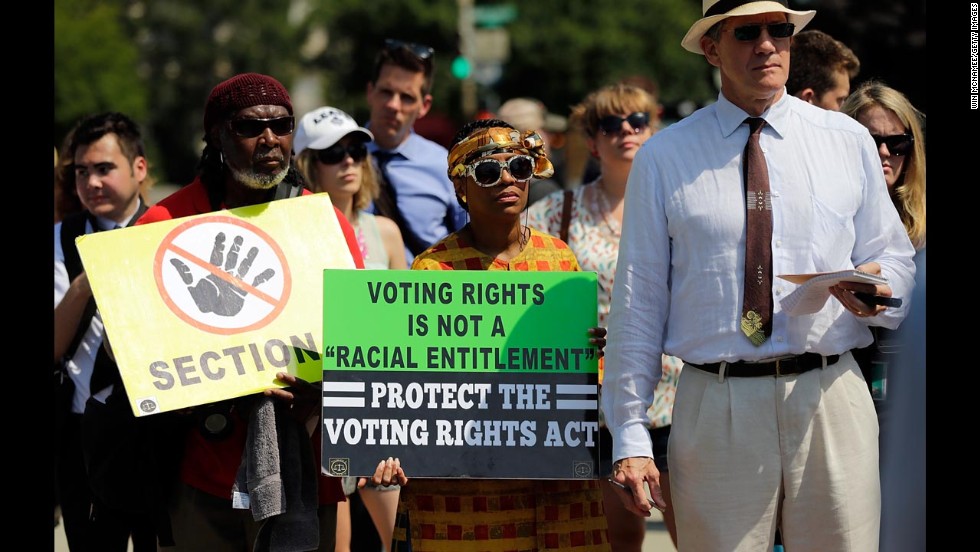
WASHINGTON, DC – JUNE 25: Supporters of the Voting Rights Act listen to speakers discussing the rulings outside the U.S. Supreme Court building on June 25, 2013 in Washington, DC. The court ruled that Section 4 of the Voting Rights Act, which aimed at protecting minority voters, is unconstitutional. (Photo by Win McNamee/Getty Images)
North Dakota and Georgia are just a tiny fraction of the voter suppression problem that must be confronted if Democrats win control of Congress. Chief Justice Roberts was correct, times have changed and blatant voter suppression and discrimination practices are not limited to southern states. If Democrats win control of either the House, the Senate, or both rewriting the Voting Rights Act to give it back the power the Supreme Court took away from it should be job 1. If Democrats win repairment, not impeachment should be the priority. Repairing the Voting Rights Act would require adding the following 4 amendments to the law:
1) Make Section 5 apply to all states
The current Voting Rights Act limits the section 5 pre-clearance stipulation for changes to election law and practices to 9 states, the pre-clearance provision should apply to all 50 states.
2) The Federal Government should draw its own lines
Every 10 years each state draws their Congressional and State Legislative districts using the latest Census data. A revamped Voting Rights Act should mandate the Federal Government draw its own lines for all 435 U.S. House seats, the states would continue to draw all other lines that they currently draw. Instead of politicians drawing the district lines for House seats that advantage their political party, a group of professionals would draw lines based on the Voting Rights Act, population equality and geographic continuity. No more gerrymandered districts for political party control. The current political climate of one political party denying 89% of American citizens their desire for a law requiring background checks for gun buyers, would disappear. Those elected to the House would be a truer reflection of the voter’s desires.
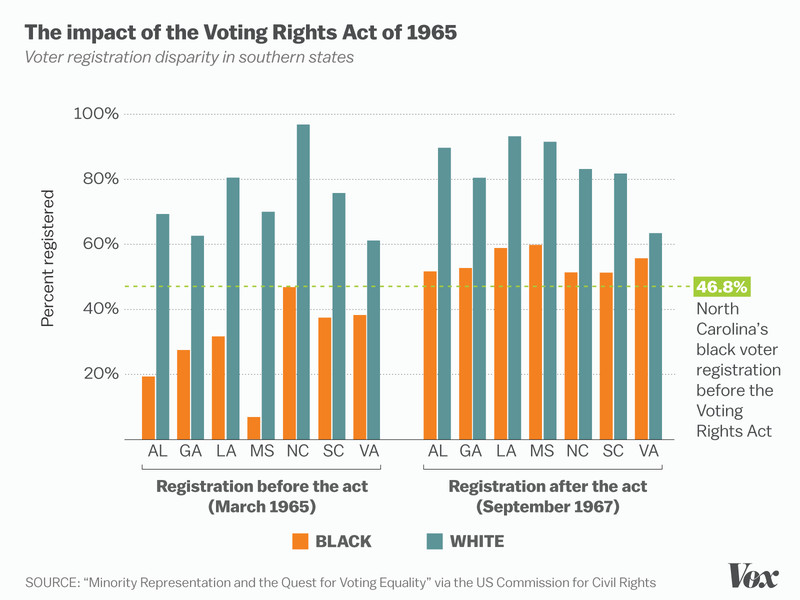
3) Change Election Day law
Currently, Election Day for federal officials is statutorily set as “the Tuesday next after the first Monday in the month of November” or “the first Tuesday after November 1”. The earliest possible date is November 2, and the latest possible date is November 8 as it was for the 2016 election. The law should be changed so that either Election Day is a federal holiday or federal elections occur over the 2 day weekend. States would be free to continue to hold their elections at the same time as federal elections or at a time of their own choosing. Both the holiday and weekend options open up the possibility of increased voter participation.
4) 1975 Pre-Clearance data should be updated
While their solution of striking down Section 4 was extreme, the Court was correct that the 1975 data used for determining which States have to submit to pre-clearance should be updated. Assuming that all the southern pre-clearance states are the same as in 1975 overlooks the progress brought about by both the Civil Rights Act and the Voting Rights Act. Assuming that no voting rights are violated in northern States denies present-day realities. Current data will reflect the truth in both northern and southern states.
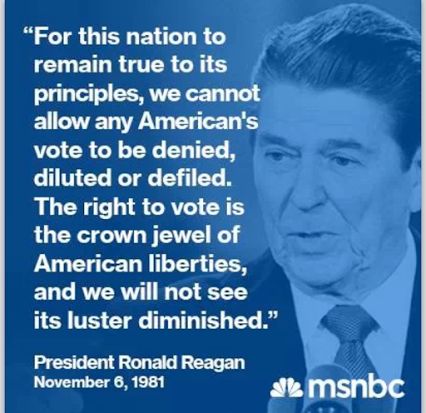
American democracy is built on the one person one vote principle. If Democrats win control of either the House or the Senate, they have to step up and do the right thing by revamping and modernizing the Voting Rights Act for the 21st century. If Democrats win repairment not impeachment is the order of the day. There is still racial voting discrimination we need to correct, but more and more we need the Voting Rights Act to stop political party vote suppression!



